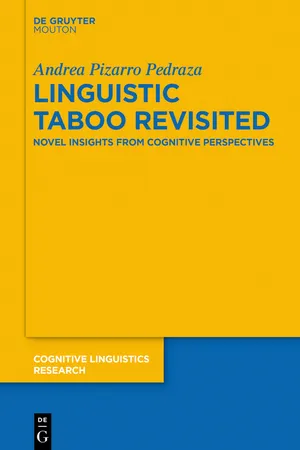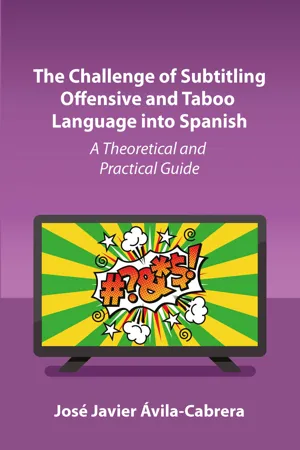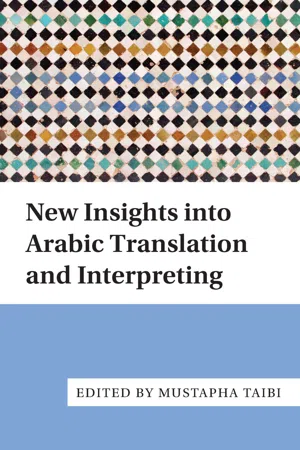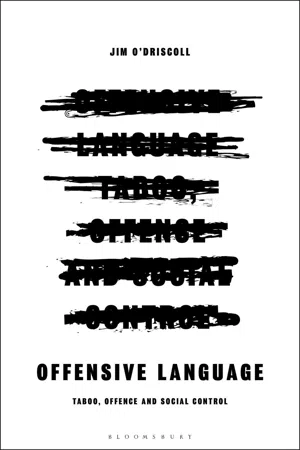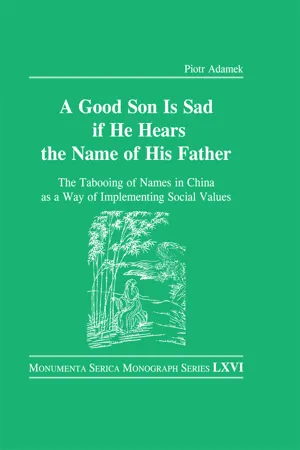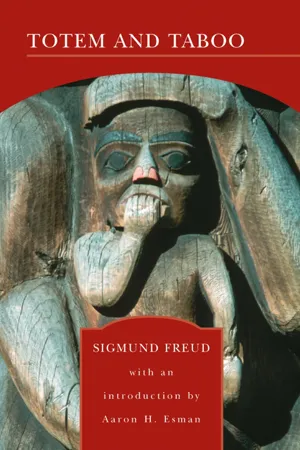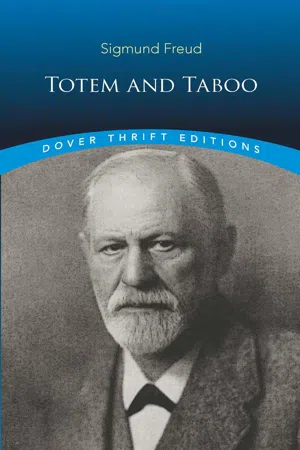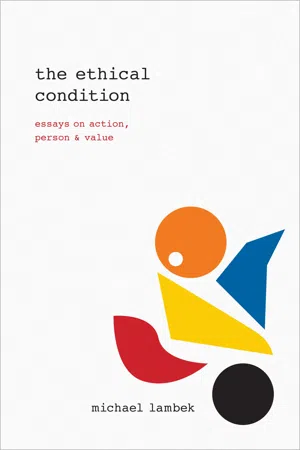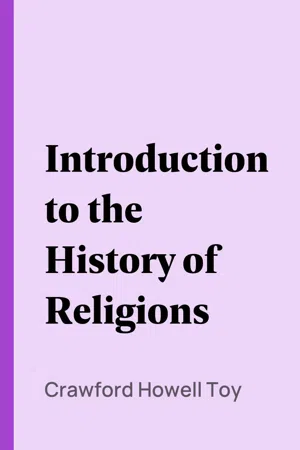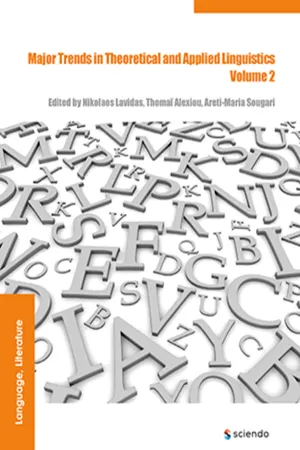Languages & Linguistics
Taboo
Taboo refers to a social or cultural prohibition against certain words, actions, or ideas. In linguistics, taboo language includes words or topics that are considered inappropriate, offensive, or forbidden within a particular culture or society. Taboo words often carry strong emotional or social significance and are typically avoided in polite conversation.
Written by Perlego with AI-assistance
12 Key excerpts on "Taboo"
- eBook - ePub
- Andrea Pizarro Pedraza(Author)
- 2018(Publication Date)
- De Gruyter Mouton(Publisher)
A Taboo tends to be a significant subject of the study of linguists and specialists in cross-cultural communication. It is topical due to the fact that the number of cultural contacts is constantly growing because of globalization. All cultures are different and every culture has its own values and Taboos. While communicating with the individuals of other cultures it is crucial to know the themes which are prohibited to talk on. It is vital to remember that communication has a specific aim and is considered effective only if this aim has been reached. The knowledge of Taboo and the capability to deal with them is the key to success in the process of communication. The objective of this paper is to analyze the significance of Taboo for the cross-cultural communication and to observe the ways to deal with forbidden themes for discussing. The research question is as follows: Do perceptions of the Polish or British English speakers vary in terms of the use of linguistic Taboo in their culture based on specific domains? The goal of this study is to analyze the specific character of Taboos in the communicative processes of different levels, study the influence of Taboos on the process communication and analyze Taboos from the point of view of English and Polish culture.2Taboo
The concept of Taboo is defined as “ny prohibitions which carry no penalties beyond the anxiety and embarrassment arising from a breach of strongly entrenched custom” (Steiner 2013: 143).Linguistic Taboos are recognized as words or expressions to be avoided because using them directly in public is perceived as violation of certain moral codes. That is, linguistic Taboos have their usage controlled by certain circumstances or reasons such as religious or cultural norms. The obscenity or beauty of language ought to then be in the ear of the listener, or in the collective ear of the audience.Crystal (1995) mentions that Taboos are the issues individuals avoid in a polite society, either because they are felt to be hurtful, embarrassing or offensive. Taboo words also include blasphemies, obscenities and profanities (Hughes 2015). Forbidden performances or words frequently reflect the specific customs and views of the society.Linguistic Taboo takes place when individuals avoid talking about specific things. Some individuals choose not to mention the prohibited words at all, since they are certain that saying these words will welcome evil spirits or invite bad fortune. Conversely, others believe that these topics should not be discussed at all, and if they do talk about these things, it is only indirectly, with euphemisms. Fromkin and Rodman (1993) added that a euphemism is a word or phrase that substitutes a Taboo word or helps to avoid frightening and unpleasant topics. - eBook - ePub
The Challenge of Subtitling Offensive and Taboo Language into Spanish
A Theoretical and Practical Guide
- José Javier Ávila-Cabrera(Author)
- 2023(Publication Date)
- Multilingual Matters(Publisher)
Taboo as a concept is as old as humanity, and in order to better understand it, we need to go back in time. Primitive peoples associated Taboo terms with magical words and also superstition. The term ‘Taboo’ was borrowed by Captain James Cook in 1777, and ‘came to refer generally to human experiences, words, or deeds that are unmentionable because they are either ineffably sacred or unspeakably vile’ (Hughes, 2006: 151).In specific cultures, certain Taboo words are considered to be ‘off-limits’. Historically, Taboos have moved from religious to secular topics such as sex and race, ‘but they can manifest themselves in relation to a wide variety of things, creatures, human experiences, conditions, deeds, and words’ (Hughes, 2006: 462). According to Jay (2009: 153–154), these words ‘are sanctioned or restricted on both institutional and individual levels under the assumption that some harm will occur if a Taboo word is spoken’. Allan and Burridge (2006: 40) maintained that ‘the phrase Taboo language commonly refers to language that is a breach of etiquette because it contains so-called “dirty words”’. However, depending on the context, they can be softened through the use of euphemistic formulas, which will be discussed later in more depth.In order to have a more general idea of what Taboo entails, it is important to mention that every culture has its own way of dealing with Taboo words or concepts. For example, Native Americans, Japanese, Malayans and most Polynesians do not swear. According to Corral Esteban (2019), Native Americans do not swear or, at least, did not use any swear words in their ancestral languages. In this culture, language is a gift from their Creator and, therefore, something sacred. The fact that swearing does not occur in some cultures may be difficult for Western cultures to understand as slang and offensive language are used to express anger, surprise, shock, etc. Here, let us draw a distinction between Taboo language and slang. While the former can refer to language that may not be welcome, the latter refers to very colloquial words or phrases, which may or may not include swear words. Therefore, some slang words can be labelled as Taboo, but not all slang terms are necessarily unwelcome. - Mustapha Taibi(Author)
- 2016(Publication Date)
- Multilingual Matters(Publisher)
As Jakobson (1959) asserts, what can be expressed in one language may be expressed in another – at least to some extent. Effectively, social and cultural norms regulate the degree of explicitness, politeness, or circumspection that a given situation requires. Taboo topics and words are a case in point. According to Nida and Taber,The associations surrounding some words sometimes become so strong that we avoid using these words at all: this is what we call verbal Taboo. On the one hand, there are negative Taboos, with associated feelings of revulsion, or disgust, against such words as the famous four-letter words in English which refer to certain body organs and functions … On the other hand, there are positive Taboos, associated with feelings of fear or awe: certain words (often the names of powerful beings) are also regarded as powerful, and the misuse of such words may bring destruction upon the hapless user. (2003 [1969]: 91)Taboo is relative in two senses: cultural group (what is Taboo for some cultures may not be so for others) and intensity or offensiveness (the same topic or word may be Taboo for different cultures, but the face (cultural) threat, risk, or offensiveness associated with it may vary from one culture to another). Referring to swear words:Often the semantics of an item in this category are not the same across languages, which means that a word might be used in one language, but its supposed equivalent in the target language does not in fact mean exactly the same thing, or it cannot be used in exactly the same way or same context. (Stratiy, 2005: 242)For this reason, it is very important for translators and interpreters – especially community interpreters – to be aware not only of cultural differences related to Taboo, but also of the scale of face–threatening potential of the same act or expression for different cultural groups and different contexts.Regarding Arab cultures, it must be noted at the outset that, contrary to common belief, sex is not a Taboo semantic field. The topic of sexuality per se is neither positive nor negative from the perspective of discourse practices among equals. Rather, sex-related Taboos depend on a number of contextual factors such as when, where, and with whom the topic is to be discussed. Usually, sex may be discussed openly among peer groups of age and gender (e.g. teenage boys or adult women), but not between men and women (except in private settings or intimate interpersonal relationships) or between adults and children (except when the setting is educational and the language used is scientific or neutral). Space, time and interpersonal relationships influence the (culture-specific) judgments of acceptability and appropriateness.- eBook - ePub
Offensive Language
Taboo, Offence and Social Control
- Jim O'Driscoll(Author)
- 2020(Publication Date)
- Bloomsbury Academic(Publisher)
In his editor’s introduction to the Oxford Handbook of Taboo Words and Language, Allan (2019b: 1) reminds us that “what is in fact Tabooed is the use of those words and language in certain contexts; Taboo applies to instances of language behaviour”. Yes, indeed it applies to these instances. But a particular instance can only be assessed negatively and labelled Taboo because it breaks some kind of generally perceived rule. In order for the instance to qualify as Taboo, there must be reference to a context-spanning, or at least situation-spanning, norm. So, when seen as potential, a definition of Taboo language must be expressed in terms of norms. The kinds of norms I have in mind here are what Culpeper (2008: 29–31) calls ‘cultural norms’ and ‘situational norms’. From the point of view of any one individual, the former are based on “the totality of [his/her] experiences of a particular culture” and the latter on “the totality of [his/her] experiences of a particular situation in a particular culture” (Culpeper 2008: 30). Notice the embedding. The idea is that the situational norms are part of the cultural norms. Together, they amount to a person’s knowledge of what is normal in certain kinds of situations in a certain culture. And the particular kinds of situation I have in mind are those in which (the individual knows) ‘polite’ norms apply (the inverted commas to indicate I am referring to the first-order notion of politeness – see section 2.1). Accordingly, I define Taboo language as any (string of) words whose production is transgressive of polite social norms. By ‘polite social norms’ I mean those norms of verbal behaviour which operate between people of a certain minimal social distance (i.e. those who are not intimates or close friends, where ‘politeness’ has little salience) and which operate in public, non-specialist domains. Further, by ‘public, non-specialist domains’, I mean all general-public domains (i.e - eBook - ePub
Good Son is Sad If He Hears the Name of His Father
The Tabooing of Names in China as a Way of Implementing Social Values
- Piotr Adamek(Author)
- 2017(Publication Date)
- Routledge(Publisher)
bihui , and the Tabooing of NamesLinguistic Taboo is, as already mentioned, a kind of Taboo known in almost every culture. Language, both spoken and written, is the most important medium of communication between human beings. People perceive a connection between a word and the object it describes, as well as a causal relation between a verbal order and its execution. Thus a word can have a “performative” power.39 That is why Taboo words were also an important part of the Taboo system in China.It seems that the first form of Tabooing was “to not speak out.” The needed information was conveyed or “performed” with a gesture of the hands, or the movement of the head or one’s eyes. This was sometimes not enough and other words would have to be used in place of the Taboo word. This kind of linguistic Taboo is called bihui in Chinese.40 The custom of bihui included many kinds of Tabooing, like Taboo of inauspicious words, Taboo of words connected to sexuality or toilet, Taboo of vulgarism, Taboo of numbers, age, etc.41 They are all common in other cultures, too. However, one kind of bihui led to particularly elaborate practices in China, much more than in other cultures, which was the Tabooing of name, and especially the Tabooing of the name of the ruler. This custom has had a tremendous impact on Chinese culture, history and politics.No special term has been proposed for the Tabooing of names, and research on it is simply called “the study of avoidances” (bihuixue ).42 But this term is in fact misleading, because of the various dimensions it includes, such as the avoidance of names, inauspicious words, etc. Therefore, although the research field is called the Tabooing of name, scholars often include Tabooing of other words as a part of it. This fact makes the already imprecise distinction between jinji and bihui - eBook - ePub
Totem and Taboo (Barnes & Noble Library of Essential Reading)
Resemblances between the Psychic LIves of Savages and Neurotics
- Sigmund Freud, A. A. Brill(Authors)
- 2009(Publication Date)
- Barnes & Noble(Publisher)
However, the term “Taboo” includes all persons localities, objects and temporary conditions which are carriers or sources of this mysterious attribute. The prohibition derived from this attribute is also designated as Taboo, and lastly Taboo, in the literal sense, includes everything that is sacred, above the ordinary, and at the same time dangerous, unclean and mysterious.Both this word and the system corresponding to it express a fragment of psychic life which really is not comprehensible to us. And indeed it would seem that no understanding of it could be possible without entering into the study of the belief in spirits and demons which is so characteristic of these low grades of culture.Now why should we take any interest at all in the riddle of Taboo? Not only, I think, because every psychological problem is well worth the effort of investigation for its own sake, but for other reasons as well. It may be surmised that the Taboo of Polynesian savages is after all not so remote from us as we were at first inclined to believe; the moral and customary prohibitions which we ourselves obey may have some essential relation to this primitive Taboo the explanation of which may in the end throw light upon the dark origin of our own “categorical imperative.”We are therefore inclined to listen with keen expectations when an investigator like W. Wundt gives his interpretation of Taboo, especially as he promises to “go back to the very roots of the Taboo concepts.”4Wundt states that the idea of Taboo “includes all customs which express dread of particular objects connected with cultic ideas or of actions having reference to them.”5On another occasion he says: “In accordance with the general sense of the word we understand by Taboo every prohibition laid down in customs or manners or in expressly formulated laws, not to touch an object or to take it for one’s own use, or to make use of certain proscribed words. . . .” Accordingly there would not be a single race or stage of culture which had escaped the injurious effects of Taboo. - eBook - ePub
- Sigmund Freud(Author)
- 2018(Publication Date)
- Dover Publications(Publisher)
However, the term “Taboo” includes all persons, localities, objects and temporary conditions which are carriers or sources of this mysterious attribute. The prohibition derived from this attribute is also designated as Taboo, and lastly Taboo, in the literal sense, includes everything that is sacred, above the ordinary, and at the same time dangerous, unclean and mysterious.Both this word and the system corresponding to it express a fragment of psychic life which really is not comprehensible to us. And indeed it would seem that no understanding of it could be possible without entering into the study of the belief in spirits and demons which is so characteristic of these low grades of culture.Now why should we take any interest at all in the riddle of Taboo? Not only, I think, because every psychological problem is well worth the effort of investigation for its own sake, but for other reasons as well. It may be surmised that the Taboo of Polynesian savages is after all not so remote from us as we were at first inclined to believe; the moral and customary prohibitions which we ourselves obey may have some essential relation to this primitive Taboo the explanation of which may in the end throw light upon the dark origin of our own “categorical imperative.”We are therefore inclined to listen with keen expectations when an investigator like W. Wundt gives his interpretation of Taboo, especially as he promises to “go back to the very roots of the Taboo concepts.”4Wundt states that the idea of Taboo “includes all customs which express dread of particular objects connected with cultic ideas or of actions having reference to them.”5On another occasion he says: “In accordance with the general sense of the word we understand by Taboo every prohibition laid down in customs or manners or in expressly formulated laws, not to touch an object or to take it for one’s own use, or to make use of certain proscribed words. . ..” Accordingly there would not be a single race or stage of culture which had escaped the injurious effects of Taboo. - eBook - ePub
The Ethical Condition
Essays on Action, Person, and Value
- Michael Lambek(Author)
- 2015(Publication Date)
- University of Chicago Press(Publisher)
Taboos do not reflect Malagasy society because they help to constitute it; they are part of its very substance. 5 My argument begins with this insight from van Gennep. My own concern is less with the theory of power that lies behind the Taboos than with the kinds of power and of persons they make possible. Similarly, I am less concerned with the content of specific Taboos (why pork rather than beef, father’s brother’s offspring rather than mother’s brother’s) than with thinking about Taboos as acts or practices and the consequences of such acts or practices for society and for the persons who carry them out. If the semantic content of the Taboo elaborates who or what one is not, it is the practice of the Taboo that substantiates who one is. This perspective also derives from the revision of psychoanalytic language from mechanism to agency (Schafer 1976, 1978). Instead of speaking about “having” Taboos, we need a language of “being” or “doing,” of verbs rather than nouns; Taboos can then be seen as claims and disclaimers. This recognizes the fact that Taboos are lived as well as thought and that the living out of Taboos is a continuous product of human agency. Taboos are produced and reproduced in a kind of dialectic of embodiment and objectification. 6 On the one hand, Taboos are objectified negative rules (proscriptions) that people can acknowledge, share, dispute, reflect upon, and choose to adhere to or to transgress, and in which anthropologists may discover structural order. Taboos may originate as culturally appropriate objectifications of either (Freudian) intra- or (Durkheimian) intersubjective experience or Lévi-Straussian play of the mind. But whatever their origins, Taboos are also embodied; that is, they become part of the lived experience of specific individuals - eBook - ePub
Taboo, Personal and Collective Representations
Origin and Positioning within Cultural Complexes
- Elizabeth Brodersen(Author)
- 2019(Publication Date)
- Routledge(Publisher)
value that is purposeful, and not accidental.Douglas (1966, pp. 44–45) goes further in her criticism of Fraser's view of Taboo as an aberrant logic. She sees little qualitative difference between indigenous practices of Taboo and our own practices of busy scrubbing and cleaning, which, she suggests, also carry symbolic meaning of separation and classification of objects into clean and dirty. She suggests that the modern approach to order/clean/blessed and disorder/dirt/sinful creates many unrelated sub-worlds, whereas as indigenous peoples create one single symbolically consistent universe.Steiner (1956, pp. 50–51) suggests that defining Taboo became historically problematic not only because of the rationalist approach to religion but because British Victorian society itself was one of the most Taboo-minded and Taboo-ridden societies on record. It was an expanding society in which new groups could rise to comparative wealth but also had to safeguard their newly acquired privileges by increasing awareness of avoidance customs as positive social factors and strictly decompartmentalising vocabulary between magic, religion, and science, which Steiner's maintains influenced both Fraser's and Robertson Smith's theory of Taboo.Expanding on the work of Radcliffe-Brown and Malinowski, Homans (1941, pp. 57–62) notes that for indigenous practices, a Taboo contains at least seven functional elements to combat anxiety that need consideration: first, primary anxiety, whenever a wo/man desires an accomplishment of certain result and does not possess the technique to secure these results, s/he feels a sentiment called anxiety; second, primary ritual whereby under these circumstances, the person tends to perform actions that have no practical results but are intended to relieve anxiety. Third, secondary anxiety in which rituals have been performed, his/her anxiety remains latent and the rites give confidence. S/he will feel anxiety when these rites are not properly performed. This anxiety becomes generalised toward anyone who has not observed the rites. Fourth, secondary ritual is a ritual of purification and expiation that functions to dispel secondary anxiety. Fifth, rationalisation is associated with ritual giving a reason for them, for example, when certain magical rites ensure the catching of fish. Sixth, symbolisation such as Catholic Mass makes an analogical reference to Christ's sacrifice on Calvary; finally, seventh, its function - eBook - ePub
God, Freud and Religion
The origins of faith, fear and fundamentalism
- Dianna T. Kenny(Author)
- 2015(Publication Date)
- Routledge(Publisher)
1984 ).Taboos: Totem and Taboo (1913)
Wundt (1906 ) regarded Taboos as the “oldest unwritten code of laws” (p. 308, in Freud, 1913a , p. 18). The word ‘Taboo’ is Polynesian in origin, although it also appeared in other cultures in the South Pacific, for example, Tongan tabu; Maori tapu. It was introduced into the English language by Captain James Cook after his visit to Tonga in 1771 (Encyclopaedia Britannica, 2010 ). The concept was also present in the ancient world – in Latin sacer; in Hebrew kadesh; in Greek agos. However, Joyce (2001 ) cautions that the various words and concepts depicting Taboos are not entirely interchangeable. The definition of ‘Taboo’ in Western cultures is ‘morally forbidden’, while the concept of tapu refers to the quality of contaminating and contagious uncleanliness that resides in objects that are tapu and which may be relieved through washing or other cleansing rituals. A similar element is present in the ancient Greek and Roman usages. Freud (1913a ) recognized these two converging meanings of the concept, describing one as sacred or consecrated and the other as “dangerous, forbidden, unclean” (p. 18).Joyce (2001 ) argued, from a philosophical and logical perspective, that these concepts are defective; that an assertion of the form “[action x] is tapu” is never true. “[R]eflection on the kind of metaphysical uncleanliness that an application of the term presupposes leads to recognition that nothing is tapu” (p. 2). However, this assertion does not explain why the concept is held to be true and indeed is embodied in whole races of otherwise intelligent and logical people. For an explanation, we turn to Freud. Freud (1913a ) commenced his analysis of Taboos with Wundt's (1906 ) conclusion that Taboos “have their origin in the source of the most primitive and at the same time most lasting of human instincts … fear of ‘demonic’ powers” (p. 307, in Freud, 1913a - eBook - ePub
Introduction to the History of Religions
Handbooks on the History of Religions, Volume IV
- Crawford Howell Toy, Morris Jastrow, (Authors)
- 2009(Publication Date)
- Perlego(Publisher)
1037 they may have arisen, as is suggested above, from general regard for sacred animals and plants, or from totemistic relations, or from other conditions unknown to us; the Hebrew lists of forbidden animals may have been gradually expanded under the guidance of antagonism to surrounding non-Yahwistic cults. Whether the ancient Taboo usages are the remains of older more extensive systems or represent the extreme point to which Tabooism was carried by the communities in question the data do not enable us to decide.626 . In various places, outside of the Polynesian area, we find terms that bear a more or less close resemblance in signification to Taboo.1038 Melanesian tambu is that which has a sacred character.1039 The Borneo terms (lali, pemate, mali, penti) are mentioned just above, and there is the pomali of Timor (in the Malayan Archipelago). The Malagasy fady is defined as 'dangerous, prohibited.'1040 In Gabun (West Africa) orunda is said to mean 'prohibited to human beings.'1041 The Hebrew tamē is used of things dangerous, not to be touched, ritually defiling,1042 and this sense sometimes attaches to the term qadosh (rendered in the English version by 'holy'), which involves the presence of a supernatural (and therefore dangerous) quality.1043627 . From all the facts known it may be concluded that the conception of Taboo exists or has existed in some form in a great part of the world,1044 though its development has differed greatly in different regions. In general its prevalence appears to have been in inverse proportion to that of totemism—it is lacking or feeble in the chief totemic centers, Australia and North America, and strongest in Polynesia, where totemism is hardly recognizable. It may be said that, while totemism appears in those forms of social life that have been created by hunting communities,1045 - Nikolaos Lavidas, Thomaï Alexiou, Areti Maria Sougari, Nikolaos Lavidas, Thomaï Alexiou, Areti Maria Sougari(Authors)
- 2014(Publication Date)
- De Gruyter Poland(Publisher)
2.1. Taboo and Insulting Words
Modern Greek, like other languages, contains words, which people avoid using in most contexts, because they feel them extremely embarrassing or offensive. Words of this type vary from Taboo words to insults or swearing (cf. Crystal 1995 ; Mercury 1995 ; Allan & Burridge 2006 ). According to Crystal (1995 : 173), these three categories may overlap or coincide, but they are not identical: to call someone κώλος ‘an ass’ is to use a Taboo word as insult, but if used with enough emotional force could be considered an act of swearing. On the other hand, στουρνάρι ‘blockhead ’, is a term of insult, but it is neither a Taboo word nor a swear word. Finally, the swear word κατάρα ‘curse’ is neither a Taboo word nor an insult (cf. Ξυδόπουλος 2008).Taboo language contains the so-called ‘dirty words’, i.e. mainly terms for bodily organs associated with sex, excretion and the act of sexual intercourse (αρχίδι ‘prick’,μουνί ‘cunt’,κώλος ‘ass’), terms for activities involving these organs (καυλώνω ‘get horny’), terms for bodily effluvia issuing from these organs (κουράδα ‘turd’,σκατό ‘shit’), terms for disease, death and the supernatural (καρκίνος ‘cancer’,πεθαίνω ‘die’). The term ‘dirty words’ denotes people’s attitudes towards the denotations and connotations of these words, which are the most emotionally evocative of all language expressions (Allan & Burridge 2006 ). People not only avoid using them in polite society, but also tend to replace them by a more technical term (e.g. πέος ‘penis’,κόπρανα ‘stool’, πρωκτός ‘rectum’) or a euphemism, which refers to the Taboo topic in a vague or indirect way (e.g. έφυγε ‘be gone’ instead of πέθανε ‘died’, πουλάκι ‘cock’ instead of πούτσος ‘prick’) (Crystal 1995 ).According to Crystal (1995 : 173), swearing refers to the strongly emotive use of a Taboo word or phrase, and its function is to express a wide range of emotions, like annoyance, frustration or anger. Swearing can mark also social distance, as for example when swearing in public (το Xριστό! ‘God damn!’), or act as an in-group solidarity marker, as when a group shares identical swearing norms (Mercury 1995 ; Allan & Burridge 2006 ; Crystal 1995 ). According to the same author, swearing can be further divided into smaller categories like blasphemies, which show contempt towards God, profanities, which show contempt to holy things or people, and obscenities, which involve the expression of indecent sexuality (cf. also Mercury 1995
Index pages curate the most relevant extracts from our library of academic textbooks. They’ve been created using an in-house natural language model (NLM), each adding context and meaning to key research topics.
Explore more topic indexes
Explore more topic indexes
1 of 6
Explore more topic indexes
1 of 4
